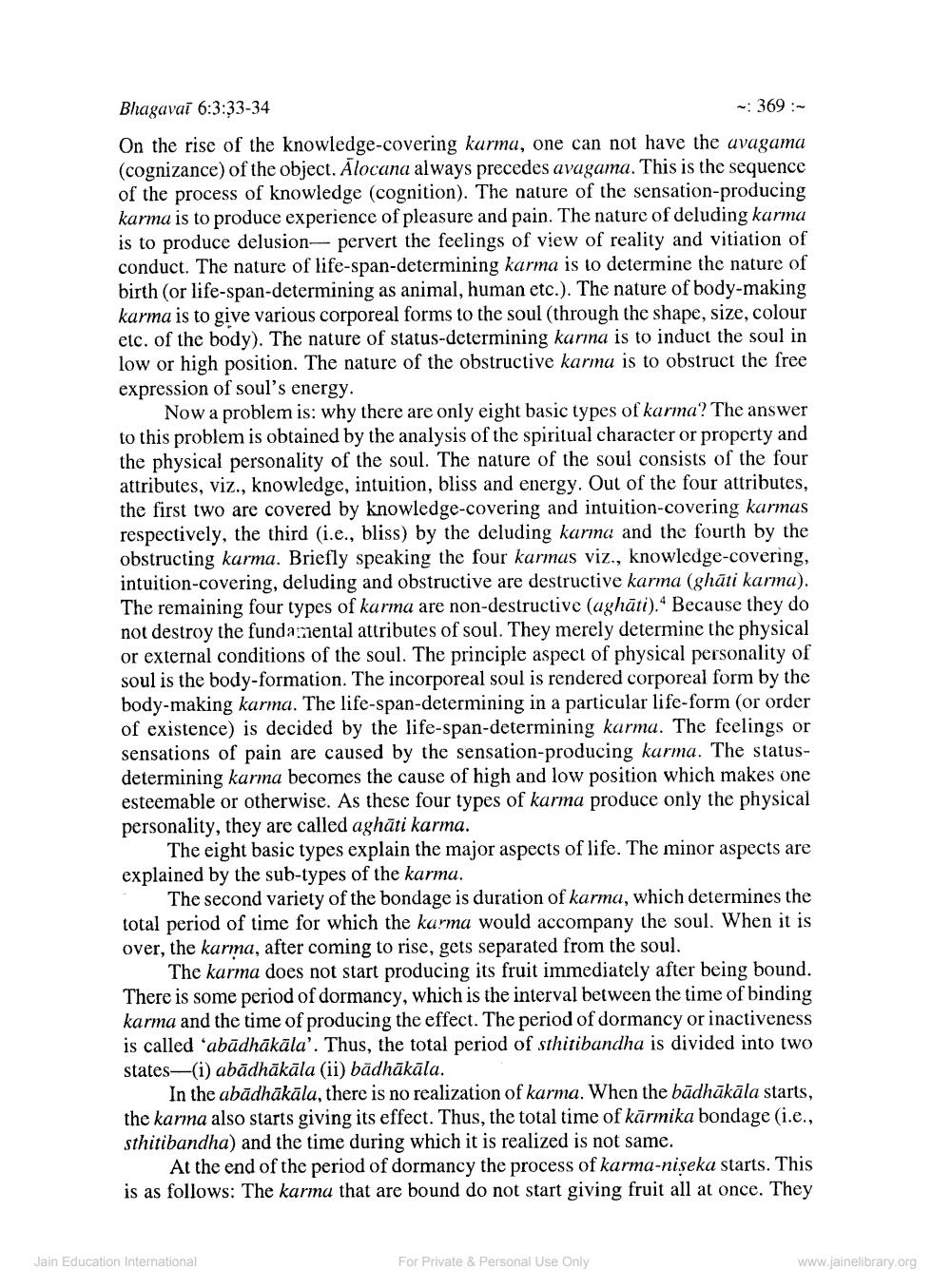________________
Bhagavai 6:3:33-34
-: 369On the rise of the knowledge-covering kurma, one can not have the avagama (cognizance) of the object. Alocana always precedes avagama. This is the sequence of the process of knowledge (cognition). The nature of the sensation-producing karma is to produce experience of pleasure and pain. The nature of deluding karma is to produce delusion- pervert the feelings of view of reality and vitiation of conduct. The nature of life-span-determining karma is to determine the nature of birth (or life-span-determining as animal, human etc.). The nature of body-making karma is to give various corporeal forms to the soul (through the shape, size, colour etc. of the body). The nature of status-determining karma is to induct the soul in low or high position. The nature of the obstructive karma is to obstruct the free expression of soul's energy.
Now a problem is: why there are only eight basic types of karma? The answer to this problem is obtained by the analysis of the spiritual character or property and the physical personality of the soul. The nature of the soul consists of the four attributes, viz., knowledge, intuition, bliss and energy. Out of the four attributes, the first two are covered by knowledge-covering and intuition-covering karmas respectively, the third (i.e., bliss) by the deluding karma and the fourth by the obstructing karma. Briefly speaking the four karmus viz., knowledge-covering, intuition-covering, deluding and obstructive are destructive karma (ghāti karma). The remaining four types of karma are non-destructive (ughāti). Because they do not destroy the fundamental attributes of soul. They merely determine the physical or external conditions of the soul. The principle aspect of physical personality of soul is the body-formation. The incorporeal soul is rendered corporeal form by the body-making karma. The life-span-determining in a particular life-form (or order of existence) is decided by the life-span-determining karma. The feelings or sensations of pain are caused by the sensation-producing karma. The statusdetermining karma becomes the cause of high and low position which makes one esteemable or otherwise. As these four types of karma produce only the physical personality, they are called aghāti karma.
The eight basic types explain the major aspects of life. The minor aspects are explained by the sub-types of the karma.
The second variety of the bondage is duration of karma, which determines the total period of time for which the karma would accompany the soul. When it is over, the karma, after coming to rise, gets separated from the soul.
The karma does not start producing its fruit immediately after being bound. There is some period of dormancy, which is the interval between the time of binding karma and the time of producing the effect. The period of dormancy or inactiveness is called 'abūdhākāla'. Thus, the total period of sthitibandha is divided into two states-(i) abādhākāla (ii) bādhākāla.
In the abädhäkäla, there is no realization of karma. When the būdhākāla starts, the karma also starts giving its effect. Thus, the total time of kārmika bondage (i.e., sthitibandha) and the time during which it is realized is not same.
At the end of the period of dormancy the process of karma-niseka starts. This is as follows: The karma that are bound do not start giving fruit all at once. They
Jain Education International
For Private & Personal Use Only
www.jainelibrary.org




